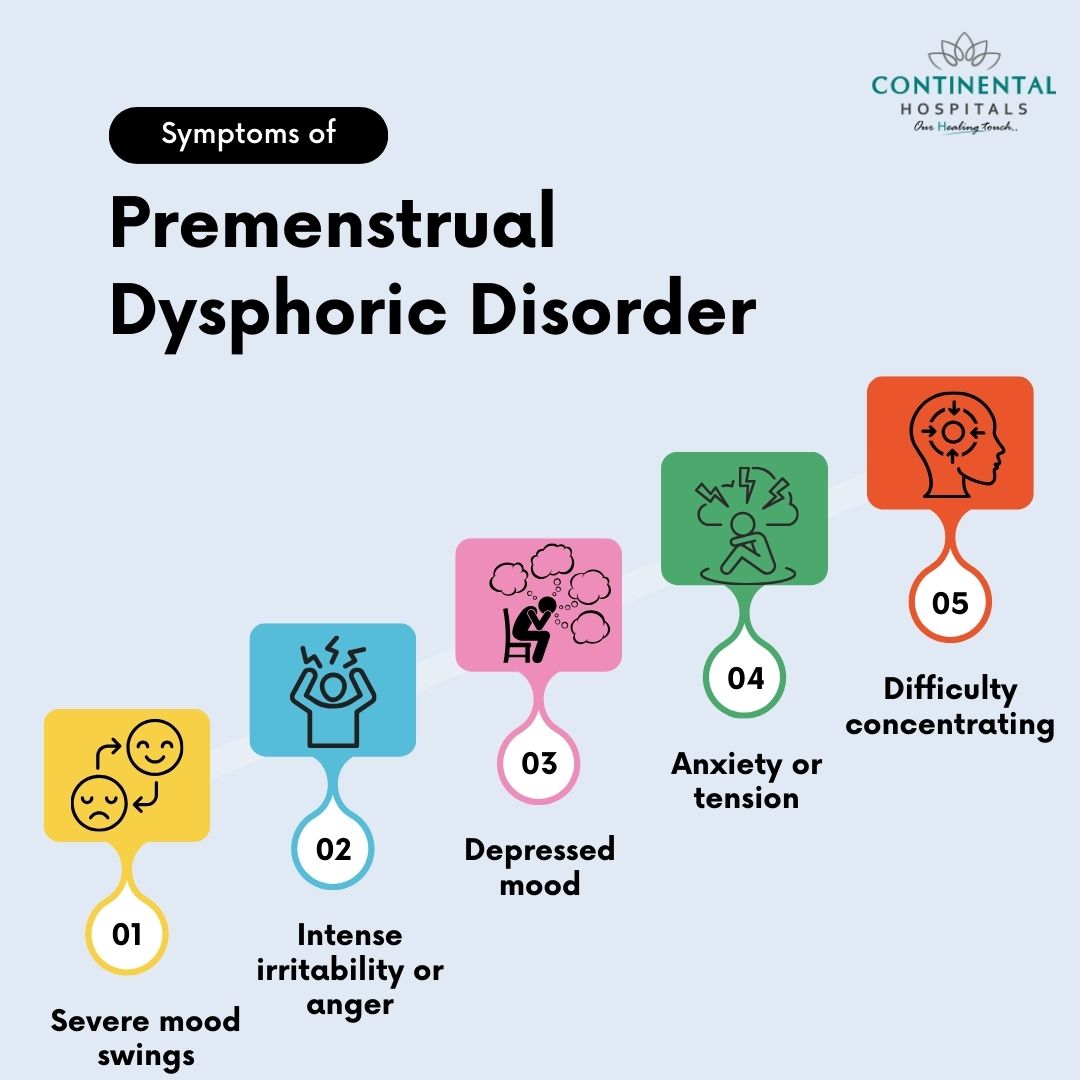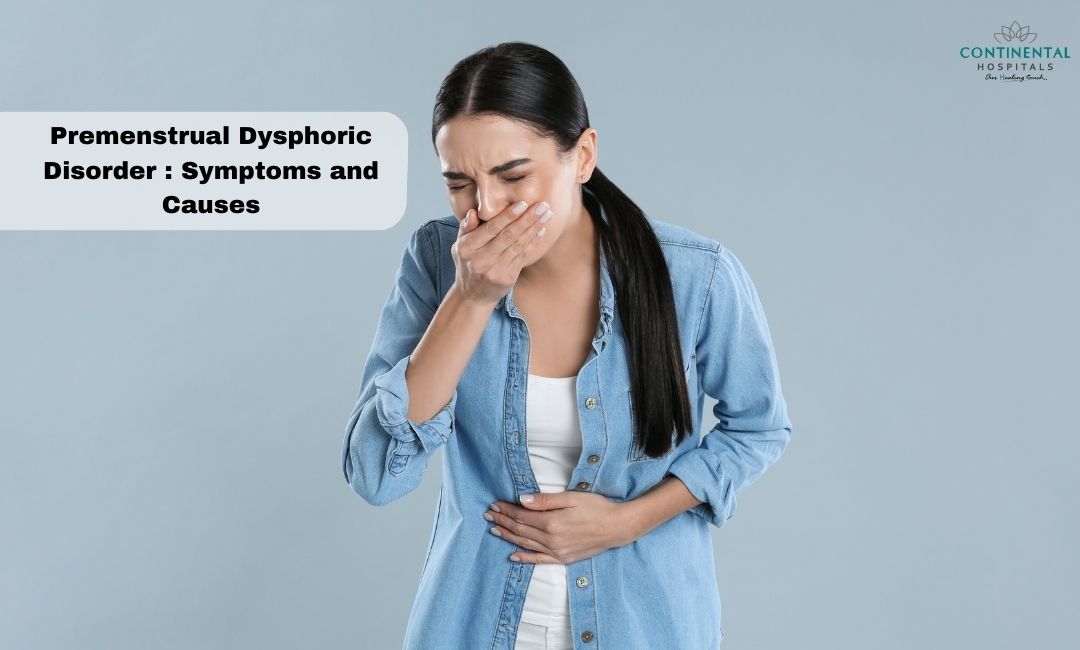Premenstrual Dysphoric Disorder (PMDD) is a severe form of premenstrual syndrome (PMS) that affects a small percentage of menstruating individuals. It involves a cluster of emotional and physical symptoms that occur in the days leading up to menstruation, significantly impacting daily functioning and quality of life. While many experience mild PMS symptoms, PMDD is characterized by more intense and disruptive manifestations, often leading to significant distress and impairment in social, occupational, or other important areas of functioning.
Globally: Around 5.5% of women and individuals assigned female at birth (AFAB) of reproductive age experience PMDD. This translates to roughly 6 million women in the United States and 1 million in the United Kingdom.
National: According to NIH, studies show a significant prevalence of PMDD in India, with estimates ranging from 3.7% to 65.7%, depending on the study methodology and diagnostic criteria used.
Age: While PMDD can occur throughout reproductive years, the average age of onset is 26.
Causes of Premenstrual Dysphoric Disorder:
While the exact cause of PMDD is not fully understood, it is believed to be a combination of biological, genetic, and environmental factors. Some potential causes and contributing factors include:
Hormonal Changes: Fluctuations in hormone levels, particularly estrogen and progesterone, during the menstrual cycle are thought to play a significant role in PMDD. Some women with PMDD may be more sensitive to these hormonal changes.
🥗 Healthy Plate Challenge
🍽 Add Your Favorite Dish
Pick Your 6 favorite foods, eat, and see the results.Drag & drop foods onto your plate.
Drop Food Here
Neurotransmitter Imbalance: Changes in neurotransmitters, such as serotonin, during the menstrual cycle may contribute to PMDD symptoms. Serotonin is involved in regulating mood, and alterations in its levels can lead to mood disturbances.
Genetic Factors: There may be a genetic predisposition to PMDD, as it tends to run in families. Women with a family history of PMDD or mood disorders may be at a higher risk.
Sensitivity to Stress: Some women with PMDD may be more sensitive to stress, which can exacerbate symptoms. Chronic stress can disrupt hormonal balance and neurotransmitter function, contributing to PMDD symptoms.
Brain Chemistry: Differences in brain chemistry and how the brain responds to hormonal changes may contribute to PMDD. Research suggests that certain brain regions involved in mood regulation may be affected in women with PMDD.
Psychological Factors: Psychological factors, such as a history of trauma or depression, may increase the risk of developing PMDD or worsening symptoms. Stressful life events and inadequate coping mechanisms may also play a role.
Environmental Factors: Environmental factors, such as lifestyle habits and exposure to environmental toxins, may influence hormone levels and contribute to PMDD symptoms.
Genetic predisposition: There may be a genetic component to PMDD, as it tends to run in families.
Symptoms of PMDD:
PMDD symptoms typically occur in the week or two before menstruation and improve within a few days after the onset of menstruation. Common symptoms include:
- Severe mood swings
- Irritability or anger
- Depressed mood
- Anxiety
- Fatigue
- Changes in appetite or food cravings
- Difficulty concentrating
- Physical symptoms such as bloating, breast tenderness, and headaches

If you suspect you have PMDD or are experiencing symptoms, it is crucial to consult with a gynecologist for a proper evaluation and personalized treatment plan
Risk Factors for Premenstrual Dysphoric Disorder:
While any woman of reproductive age can develop PMDD, certain factors may increase the risk, including:
History of mood disorders: Women with a history of depression or other mood disorders may be more susceptible to PMDD.
Stress: High levels of stress can exacerbate PMDD symptoms.
Lifestyle factors: Poor diet, lack of exercise, and inadequate sleep may contribute to PMDD.
Trauma: Women who have experienced trauma, such as abuse or neglect, may be at higher risk for PMDD.
Prevention Tips for Premenstrual Dysphoric Disorder:
While PMDD cannot always be prevented, there are steps women can take to help manage symptoms and reduce their impact:
Regular Exercise: Engaging in regular physical activity can help alleviate PMDD symptoms by reducing stress, improving mood, and promoting better sleep.
Healthy Diet: Adopting a balanced diet rich in fruits, vegetables, whole grains, and lean proteins while limiting caffeine, alcohol, and sugary foods may help regulate mood swings and physical symptoms.
Stress Management: Practicing stress-reduction techniques such as mindfulness meditation, deep breathing exercises, yoga, or progressive muscle relaxation can help reduce the severity of PMDD symptoms.
Adequate Sleep: Prioritize getting enough sleep each night, aiming for 7-9 hours, as poor sleep quality or insufficient sleep can exacerbate PMDD symptoms.
Limit Caffeine and Alcohol: Both caffeine and alcohol consumption can worsen PMDD symptoms, so it's advisable to limit or avoid these substances, especially during the luteal phase of the menstrual cycle.
Hormonal Birth Control: Hormonal birth control methods, such as oral contraceptives, patches, or hormonal IUDs, may help regulate hormonal fluctuations and alleviate PMDD symptoms in some women. However, the effectiveness of these methods can vary, and they may not be suitable for everyone.
Cognitive-Behavioral Therapy (CBT): CBT, a type of talk therapy, can help individuals develop coping strategies to manage negative thoughts and behaviors associated with PMDD. It can be particularly helpful in addressing mood-related symptoms.
Keep a Symptom Diary: Keeping track of PMDD symptoms throughout the menstrual cycle can help identify patterns and triggers, allowing for better management and treatment planning with healthcare providers.
Premenstrual Dysphoric Disorder is a challenging condition that can significantly impact a woman's life. By understanding the causes, symptoms, risk factors, and prevention strategies associated with PMDD, women can take proactive steps to manage their symptoms and improve their overall quality of life. Seeking support from healthcare providers, maintaining a healthy lifestyle, and exploring treatment options can all play a crucial role in managing PMDD effectively.
If you suspect you have PMDD or are experiencing symptoms, it is crucial to consult with a gynecologist for a proper evaluation and personalized treatment plan
Related Blog Articles
1. PCOS and Its Related Conditions
2. Infertility in Men and Women
3. Endometriosis: The Hidden Cause of Irregular Periods
.webp)














